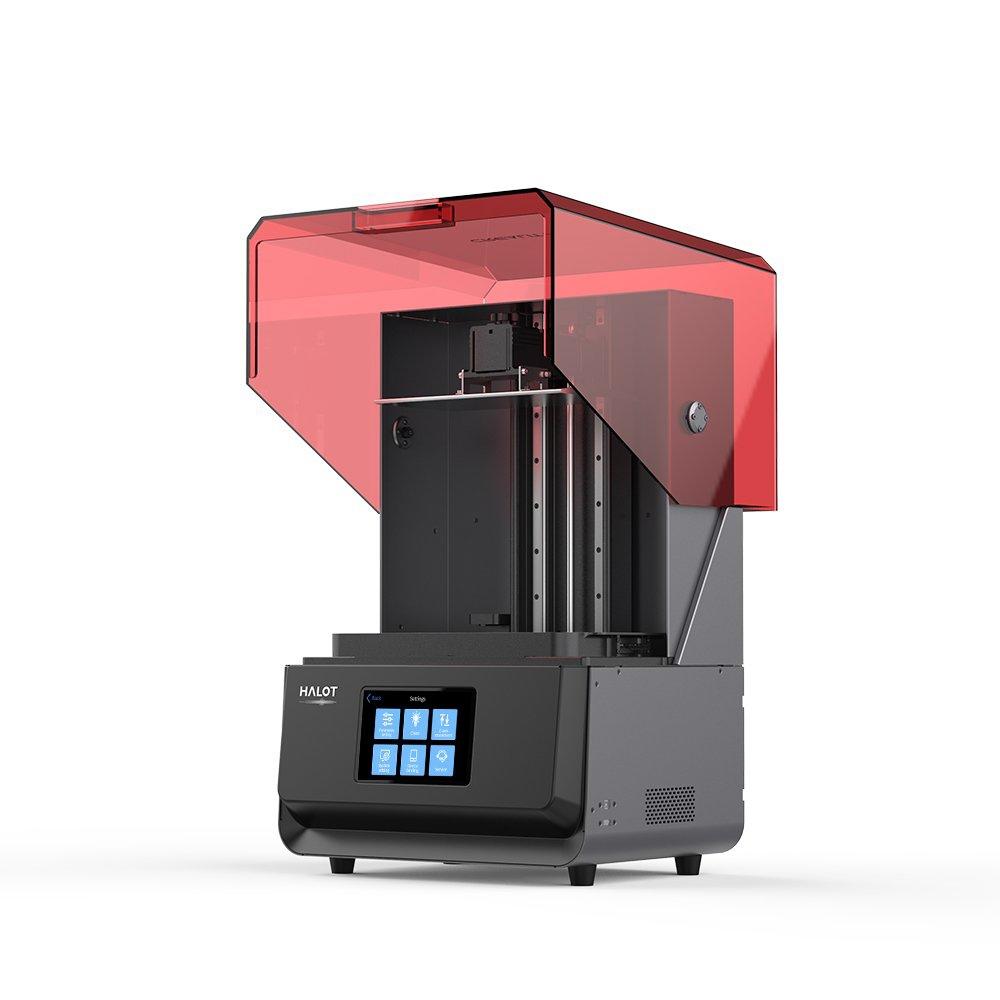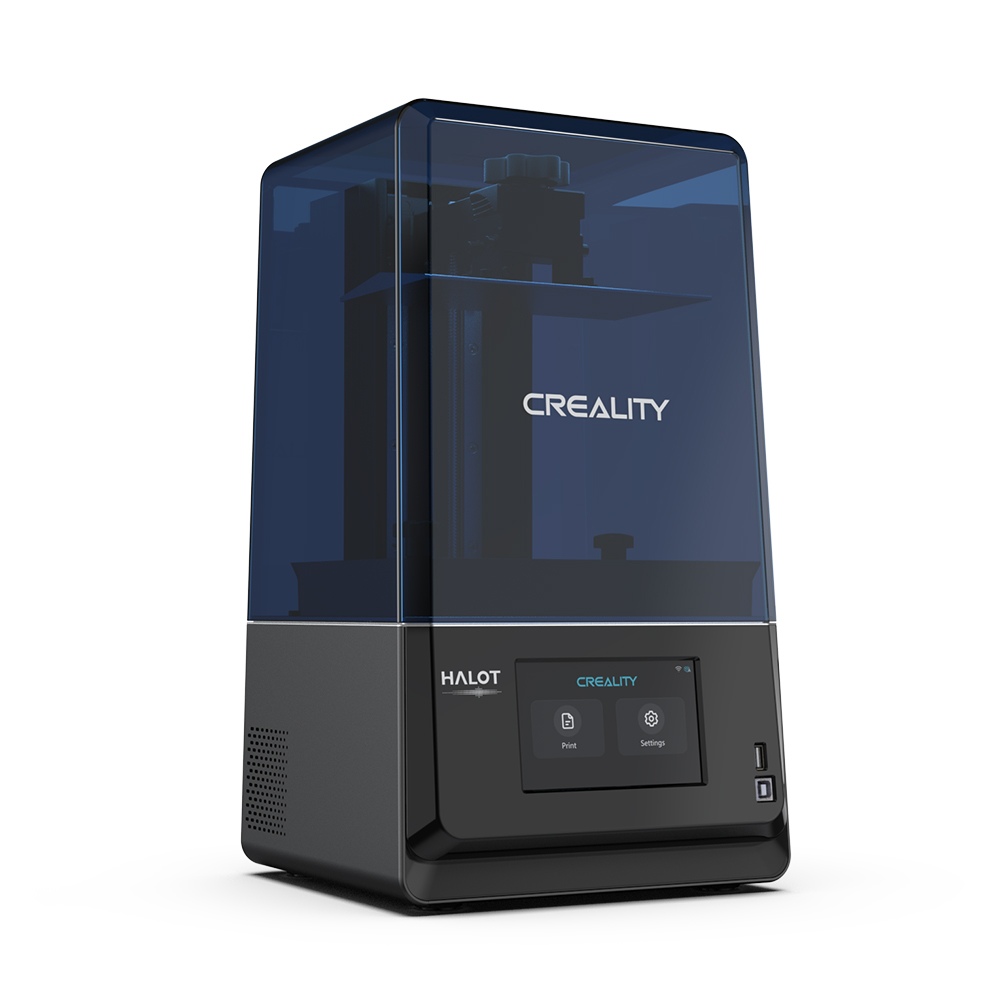Compare Halot Max vs Halot One Plus
Comparison between the best 3D printers
Choose the best 3D printer at the best price. The cheapest 3D printers are here.
Buy a 3D printer here with 3D Fila.
 |
 |
|
| Model | Halot Max[BUY Halot Max] |
Halot One Plus[BUY Halot One Plus] |
| Printing Material | Resin | Resin |
| Buy Resin for Creality 3D Halot Max | Buy Resin forCreality 3D Halot One Plus | |
| Estimated price | $3000,00 | $399,00 |
| Manufacturer | Creality 3D | Creality 3D |
| Release Year | 2021 | 2022 |
| Print Volume [mm] | 293x165x300 | 102x172x160 |
| Printer Size [mm] | 480x387x770 | 236x245x416 |
| Weight [kg] | 32,5 | 6,8 |
| Power Loss Recovery | NO | NO |
| Technology | LCD | LCD |
| Screen Resolution | 4k | |
| Max Print Speed [s/layer] | 1 | 1 |
| Maximum Resolution [mm] | 0,03 | |
| Processor | ||
| Display | Display touchscreen 5'' | |
| Power Supply | ||
| Connectivity | SD / USB / Wi-Fi | USB / Wi-Fi |
| Operating systems | Windows, Mac, Linux | |
| Date of registration in the system | 2022-11-04 | 2022-10-11 |
| Release date | 2021 | 2022 |
| Extra features | The Halot Max printer stands out for its large print size (293 x 165 x 300 mm) and uses SLA technology. It has an integral light source for improved accuracy and a strong core with an advanced operating system. Its Z-axis module ensures high precision, supported by efficient slicing software. The machine offers online OTA updates and boasts an adjustable layer thickness between 10 and 200 microns. Its XY-axis resolution is 3840*2160, with 0.05 mm accuracy, and an integral 405nm light source. The printer includes a 5" touchscreen and multiple connectivity options, such as USB, Creality Cloud, and HALOT BOX WiFi. With cutting-edge technology, the Halot Max is ideal for printing small models with uniform precision, thanks to its self-developed lighting system and stable printing mechanism, which includes dual linear guides, ball screws, and an intelligent brake system. | Crealitys Halot-One Plus printer stands out for its 4K+ resolution that delivers sharp details and consistent surfaces. It features a fast and responsive 5-inch LCD interface, as well as easy-to-use Halot Box software. It offers Wi-Fi connectivity and remote print monitoring, as well as an integrated air filtration unit, a rare feature in this price range. The Halot-One Plus is designed for the prosumer market, combining high quality with advanced features such as Wi-Fi and air filtration. During testing, it stood out for implementing these features at an affordable cost, while maintaining functionality. It features an attractive design with a UV-resistant blue cover and a robust dual rail system for the Z-axis, ensuring smooth and consistent movements. The large LCD and high resolution of the LCD mask (4320 x 2560) are other strong points, allowing for fine details and textures in prints. |
| Support for multiple colors and materials (AMS and CFS) | NO | NO |
Notes * |
||
| Cost-benefit | 5 / 10 | 8 / 10 |
| Hardware | 1 / 10 | 1.2 / 10 |
| Tela | . | . |
| Print volume | 3 / 10 | 3 / 10 |
| Performance | 9 / 10 | 9 / 10 |
| [BUY Halot Max] | [BUY Halot One Plus] |
Conclusion |
| In conclusion, when comparing the Halot Max and the Halot One Plus, it's evident that both 3D printers serve different market segments and user needs. The Halot Max, while significantly more expensive, offers a larger print volume and advanced features suited for professional applications where precision and detail are paramount. Its cutting-edge technology and high resolution make it ideal for intricate models, although its price may be a barrier for casual users or hobbyists. On the other hand, the Halot One Plus emerges as a more budget-friendly option without sacrificing essential features. It appeals to prosumers looking for quality at a more reasonable cost, showcasing impressive resolution, connectivity options, and a compact design. The inclusion of an air filtration unit is a notable addition at this price point, enhancing its usability in diverse settings. Ultimately, the choice between these two models boils down to budget and intended use. Serious professionals may find justification for the investment in the Halot Max, while casual users and enthusiasts will likely appreciate the value proposition of the Halot One Plus. Thus, prospective buyers should assess their printing needs, budget constraints, and the specific features that are most important to them before making a decision. |

